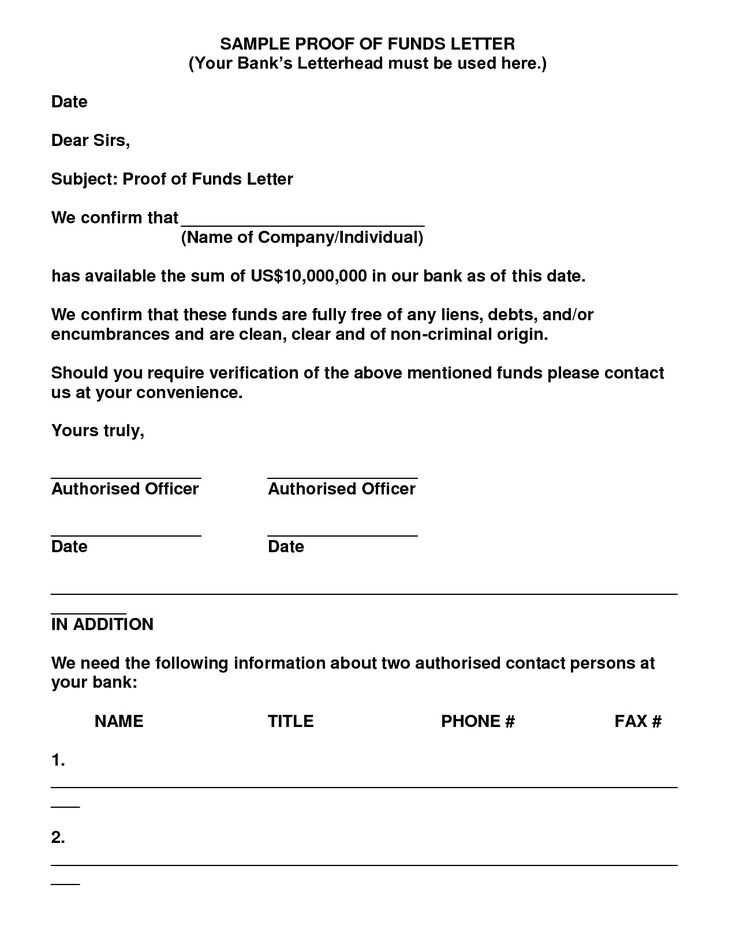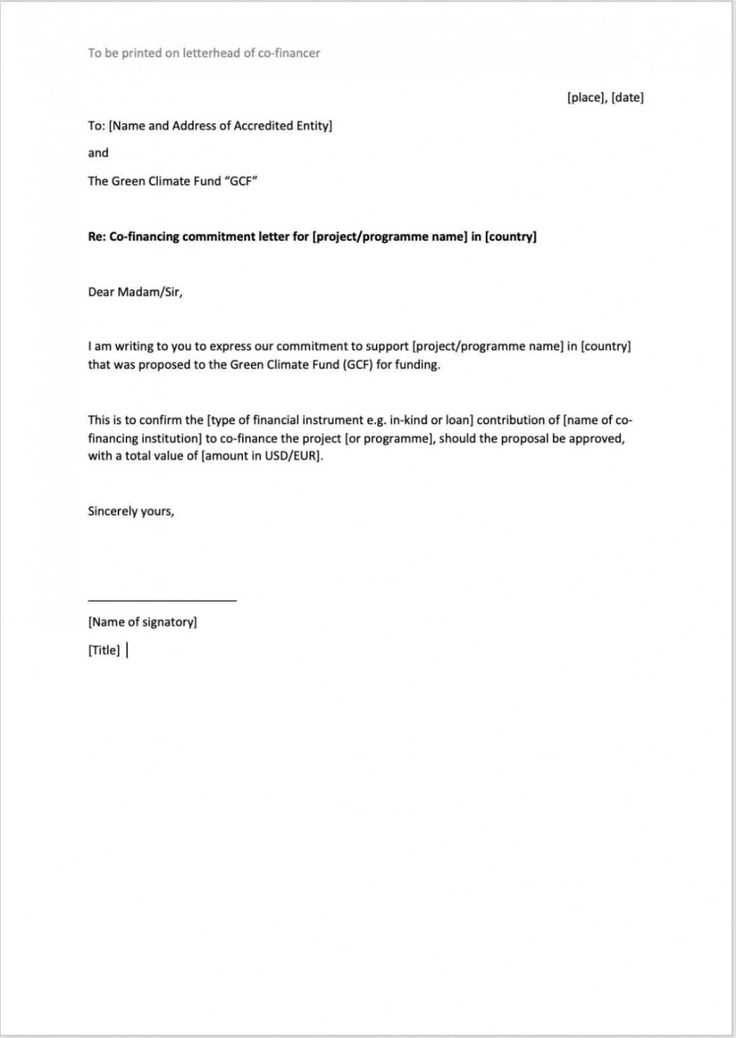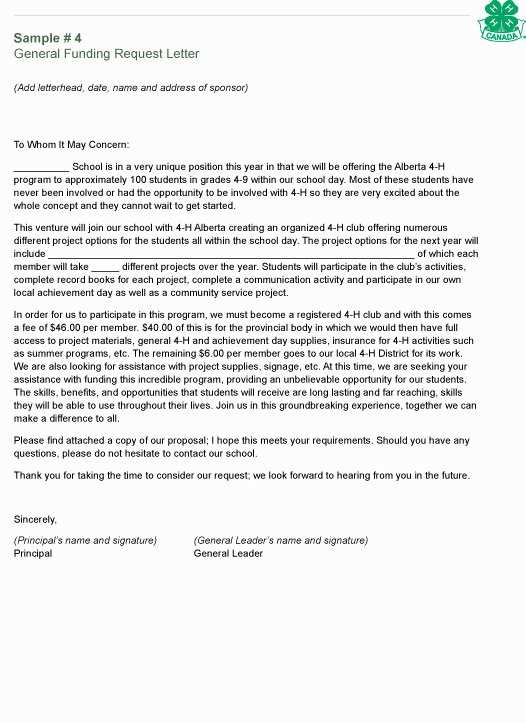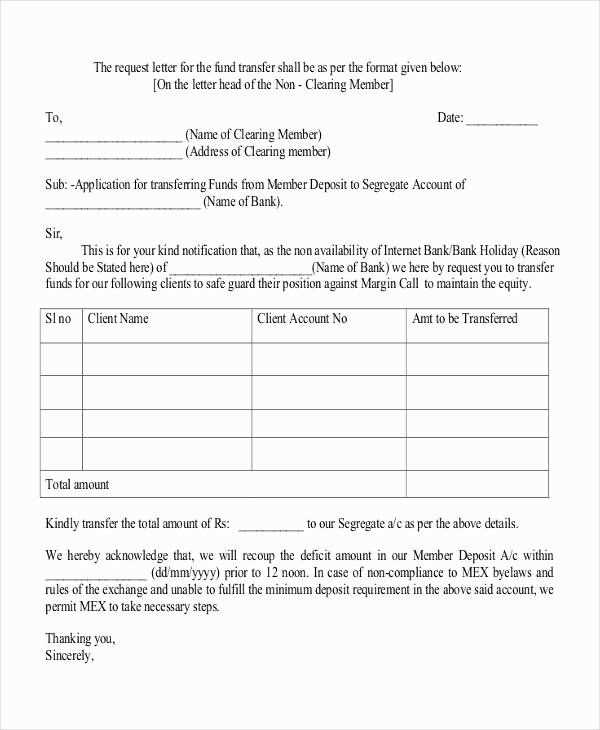How to Write a Funding Request Template Letter

When seeking financial assistance for a project or initiative, it’s essential to clearly present your goals and needs in a way that resonates with potential supporters. The process of asking for funds requires a well-organized and compelling approach, ensuring that the reader understands the significance of your cause and how their contribution will make an impact. Crafting such a message is crucial for creating strong, lasting relationships with donors.
Clarity and precision are key when putting together an effective message. You’ll need to highlight the importance of your work, explain how the support will be used, and provide the necessary details to demonstrate the legitimacy and value of your project. A clear and persuasive appeal can significantly increase the likelihood of securing the financial backing you need.
Whether you are addressing a corporate sponsor, a nonprofit organization, or an individual donor, having a structured format helps to ensure that all the relevant information is conveyed effectively. This article will guide you through the important components to include and provide tips on how to engage potential benefactors with your request.
Essential Elements of a Funding Appeal
When seeking financial support, it’s important to include key information that not only outlines the needs but also shows the value and potential impact of the project. A well-crafted request should engage the reader and make a strong case for why they should consider contributing. To achieve this, certain elements must be incorporated to ensure clarity and relevance.
The first element is a clear introduction that explains the purpose of the appeal and why the project is necessary. It’s important to provide context and briefly describe the mission or goals of your initiative. Next, you need to clearly define the specific needs for financial backing. Be precise about the amount you require and how the funds will be used, offering a transparent breakdown of expenses when possible.
Another crucial aspect is demonstrating the impact your project will have. Potential donors want to understand how their support will make a difference, so highlighting measurable outcomes and tangible benefits can be persuasive. Lastly, always include a call to action that encourages the reader to act, whether it’s offering a donation, arranging a meeting, or simply reaching out for further details.
Understanding the Purpose of Your Letter
Before you begin crafting a message to secure financial support, it’s essential to fully understand the purpose behind your communication. The main goal is to make a compelling case for why your initiative deserves backing. Your message should not only highlight the importance of the project but also clearly articulate how it aligns with the values or interests of the potential benefactor.
To achieve this, consider the following key points:
- Clarify your goals: Explain the main objectives of your initiative and the outcomes you hope to achieve.
- Demonstrate the need: Make it clear why financial support is crucial and how it will help drive your mission forward.
- Engage the reader: Connect with the recipient by showing how their contribution will make a tangible difference in the success of your project.
By focusing on these aspects, your communication will serve its primary purpose: to inform, persuade, and motivate the reader to take action. The more precisely you can communicate the value of your cause, the greater your chances of securing the necessary backing.
Tips for Structuring a Funding Letter
Organizing your appeal in a clear and logical manner is essential for making a strong impression on potential donors. A well-structured message helps convey your intentions effectively and makes it easier for the recipient to understand the purpose and value of your request. By following a clear structure, you ensure that important details are highlighted and your appeal is more likely to succeed.
Here are some key components to include when structuring your message:
| Section | Description |
|---|---|
| Introduction | Provide a brief overview of the purpose of your appeal and introduce your project or initiative. |
| Need for Support | Clearly explain why you require assistance and how the funds will be used, providing any relevant details. |
| Impact | Describe the potential outcomes of your project and how the donor’s support will contribute to its success. |
| Closing | Reiterate your request and provide a clear call to action, such as offering contact details or next steps. |
By following this basic framework, you can ensure that your message is clear, professional, and persuasive, significantly increasing the chances of securing the support you need.
How to Organize Key Information Clearly
When seeking support for your initiative, presenting your information in a well-organized manner is essential for clarity and impact. By structuring your content logically, you make it easier for the recipient to understand your needs, goals, and the importance of your project. A clear and concise approach helps ensure that all necessary details are effectively communicated without overwhelming the reader.
To achieve this, follow these organizational tips:
- Start with a strong introduction: Briefly introduce your project and outline its objectives right from the beginning.
- Present key details logically: Break down the important information into digestible sections, ensuring each part serves a distinct purpose.
- Highlight the impact: Focus on how your project will make a difference and why it’s worthwhile for the recipient to be involved.
- Use bullet points: List specific needs, goals, or steps to make the content easier to follow and more visually accessible.
By organizing your message with these strategies, you ensure that the recipient can quickly understand your needs and the potential impact of their support, increasing the likelihood of a favorable response.
Common Mistakes in Financial Appeals

When seeking financial support, many individuals and organizations make critical errors that can hinder the success of their appeals. These mistakes can stem from a lack of clarity, poor presentation, or failing to properly engage the potential donor. Understanding and avoiding these common pitfalls is essential for crafting a persuasive and effective message.
Some frequent mistakes include:
- Vague Objectives: Not clearly stating the specific goals or outcomes of the project can leave the recipient uncertain about the purpose and impact of their contribution.
- Unclear Budget: Failing to outline how the funds will be spent can raise concerns about accountability and transparency.
- Overwhelming Information: Providing too much unnecessary detail or lengthy explanations can make the appeal difficult to follow, reducing its effectiveness.
- Lack of Personalization: Sending a generic message without addressing the unique interests or values of the recipient may fail to engage them or show the relevance of the project to their mission.
By being mindful of these common errors and focusing on clear, concise, and personalized communication, you can greatly increase your chances of securing the support you need.
Avoiding Pitfalls in Your Proposal
When crafting a proposal to secure support, avoiding common mistakes is crucial for making a lasting impression and increasing your chances of success. Pitfalls can easily undermine your efforts, making your communication less persuasive and potentially causing it to be overlooked. Ensuring that your message is clear, professional, and well-structured will help you stand out and effectively convey the importance of your initiative.
Stay Focused on the Main Goal

One common mistake is straying from the main objective. While providing background information can be helpful, excessive detail or unrelated content can confuse the reader. Stick to the core purpose of your appeal and present your points in a focused, concise manner. This keeps the reader engaged and makes it easier for them to understand your needs.
Be Realistic and Transparent
Another pitfall is presenting unrealistic expectations or failing to provide clear, transparent information. Overestimating the scope or impact of your project can raise doubts and undermine your credibility. It’s essential to be honest about what you can achieve with the support you’re requesting, and provide realistic projections or outcomes that the reader can trust.
By avoiding these common pitfalls, you can increase the likelihood that your proposal will be taken seriously and considered favorably.
How to Address Potential Funders
When seeking support from potential contributors, how you address them plays a significant role in establishing a respectful and professional relationship. The tone and approach you use can influence how seriously your request is taken. Tailoring your communication to show appreciation and understanding of their goals can make a substantial difference in how your message is received.
Personalize Your Approach: It is crucial to address each potential supporter individually. Generic messages are less likely to engage the reader. Research their mission, interests, and past contributions to ensure that your message is aligned with their values and objectives.
Use a Respectful Tone: Maintain a professional and respectful tone throughout your message. Acknowledge the significance of their work and how their involvement can make a positive impact. Showing respect for their expertise and contributions can increase the likelihood of them responding favorably.
Be Clear and Direct: While being polite, be clear and direct about your needs. Potential contributors appreciate understanding exactly what you’re asking for and how it fits within their priorities. Avoid vague language or overly complex explanations that might dilute your main message.
By addressing potential supporters in this thoughtful, personalized way, you create a strong foundation for building relationships that are beneficial for both parties.
Crafting a Persuasive and Professional Tone
Establishing a persuasive and professional tone is essential when seeking support. The way you present your message can greatly influence how it is received, and striking the right balance between assertiveness and respect can lead to more positive outcomes. A well-crafted tone not only conveys the importance of your project but also builds credibility and trust with your audience.
Balance Confidence with Humility

One key to an effective tone is confidence in your goals and vision. However, it’s important to balance this confidence with humility, acknowledging the value that the recipient can bring to your endeavor. This approach makes your appeal compelling without coming across as presumptuous or overly self-assured.
Maintain Professionalism and Clarity
Professionalism is crucial in maintaining the recipient’s respect and attention. Avoid overly casual language or slang, and focus on clarity. Clearly outline the objectives of your initiative and the specific support you seek, ensuring that your message is easy to follow and free of unnecessary jargon.
By combining confidence, humility, and clarity, you can create a tone that is both persuasive and professional, increasing your chances of successfully engaging potential supporters.